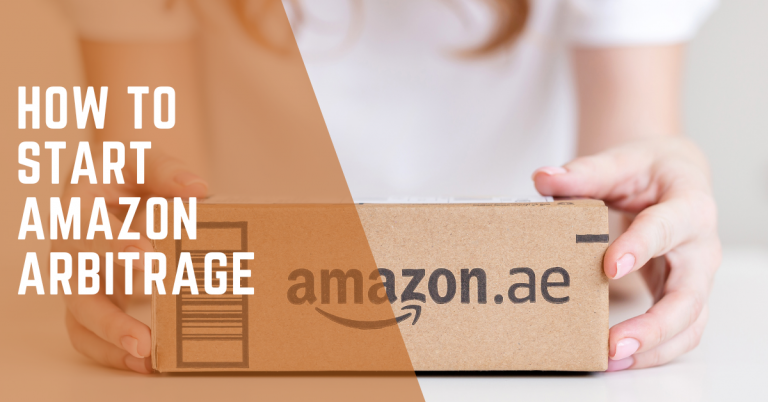Best 10 Items for Retail Arbitrage [Tested By Experts]
Retail arbitrage has become a popular strategy for entrepreneurs looking to capitalize on price discrepancies between markets. By purchasing products at a low price in one market and selling them at a higher price in another, individuals can generate substantial profits. But what exactly makes this business model so appealing?
As e-commerce continues to grow, the opportunities for retail arbitrage expand. This strategy doesn’t require a hefty investment in product development or branding, making it accessible to many.
Also read: Amazon Arbitrage 101: How To Start Amazon Arbitrage
What is Retail Arbitrage?
Retail arbitrage is a way to make money by buying products at a low price from one place and selling them for a higher price somewhere else. This method takes advantage of the different prices for the same product in different stores or websites. For example, if you find a toy on sale in one store and it is more expensive on an online marketplace, you can buy it cheap and sell it online to make a profit.
To start with retail arbitrage, you just need to spot these price differences and act on them. You buy the items that are priced low and then sell them at places where people will pay more. This could be on websites like Amazon or eBay, or even in different physical stores.
This way of making money works because not all stores and places have the same prices. Some may have special sales or discounts that others don’t. By moving products from a cheaper market to a more expensive one, you can earn the difference in price as profit. It’s a simple idea, but it needs good timing and an understanding of what products will sell well.
The Basics of Retail Arbitrage
Retail arbitrage is a simple way to earn money by buying items at a low price and selling them for a higher price. This process involves finding cheap products and selling them where people will pay more. Here are the steps to follow:
- Research Products: Look for products that are cheaper in one store than they are in others. You can use apps or websites to compare prices.
- Buy the Products: Once you find a good deal, buy the products. Make sure you are getting them at a really low price to make a profit later.
- List the Products for Sale: Put the products up for sale in places where people pay more, like online marketplaces such as Amazon or eBay.
- Sell and Ship: When someone buys your product, you need to send it to them. Pack the product well and ship it quickly.
- Make a Profit: The difference between the price you paid and the price you sold the item for is your profit. After paying for all expenses, what’s left is your earnings.
Best Items for Retail Arbitrage
Clearance and Discounted Items
Check your local retail stores often for clearance sections and deeply discounted merchandise. As stores make way for new inventory, they need to clear out old stock at rock-bottom prices. These products can be an arbitrageur’s goldmine when flipped online at standard rates. Look for clearance tags like “75% off” or “final markdown” across all product categories.
Toys and Games
The toy and game industry is massive, with new popular items launching constantly. Hit up stores after peak seasons like holidays and birthdays to score leftovers on clearance.
Also, watch for age-marked toys going on sale as kids outgrow them. Classic toys and games maintain high demand year-round for resale.
Consumer Electronics
Small consumer electronics like headphones, portable speakers, and phone accessories have high selling potential. Retailers are always clearing out shelf space for the latest models. Snap up previous generations at a discount, as many buyers just want basic functionality at a low price online.
Home and Kitchen Goods
From small appliances to cookware to decorative pieces, these products are prime for retail arbitrage. Stores like HomeGoods, TJ Maxx, and Marshalls constantly rotate discounted inventory bought from other retailers’ overstock. You can often double your money reselling these finds online.
Books
Books have some of the highest profit margins in retail arbitrage. Textbooks, while not lightweight, maintain strong demand each semester for college students looking to save. But you can also score popular fiction titles on clearance that readers avidly purchase used online.
Health and Beauty
Non-perishable makeup, skincare, grooming, and personal care products offer ample arbitrage opportunities. Department stores are always rotating out seasonal products and discontinuing lines, providing a supply of goods to buy cheap and flip for a nice markup online.
Sporting Goods and Outdoor Equipment
Anything related to sports, fitness, camping, and outdoors sells extremely well online. Catch clearance sales at sporting goods stores and hunt for discounted overstock among mainstream retailers as well. These products have broad demand even if last year’s model.
Baby Products
The kids & baby section is a goldmine for retail arbitrage, as parents are always in need of replenishing supplies. From clothing to toys to furniture and gear, you can buy these items for a steal from stores going out of business or making way for new inventory.
Grocery and Household Supplies
While not the most exciting category, non-perishable grocery, cleaning, and paper goods can bring in respectable profits. Look for bulk and club store discounts to source these for cheap and resell them individually online at marked-up prices.
Seasonal and Holiday Items
After every major holiday, stores start clear acing out all their seasonal merchandise at extreme discounts. If you have storage space, load up on these goods to resell online when that season rolls around again next year at full price.
FAQ
What are the best types of products for retail arbitrage?
The ideal products for retail arbitrage are those that are in high demand but low in supply, such as limited edition items, seasonal products, or sought-after electronics.
Where can I find products to buy for retail arbitrage?
You can source products for retail arbitrage in the clearance sections of large retail chains, discount stores, thrift stores, and during special sales events. Online retailers who offer significant markdowns are also valuable sources for products.
How do I determine if a product is a good choice for retail arbitrage?
To decide if a product is a viable option for retail arbitrage, compare its purchase price in brick-and-mortar stores with the going price on online platforms like Amazon, eBay, or Walmart. Utilizing tools and apps that provide real-time price comparisons across different platforms can aid in identifying profitable deals.
What tools are essential for successful retail arbitrage?
Key tools for effective retail arbitrage include a price scanner app for immediate price checks, a service like CamelCamelCamel to access Amazon price history, and inventory management software to efficiently track your stock and sales.
Are there any risks associated with retail arbitrage?
Retail arbitrage comes with several risks, including the possibility of investing in inventory that does not sell, experiencing price fluctuations that affect profit margins, and facing issues with marketplace platforms such as potential account suspensions on Amazon.





